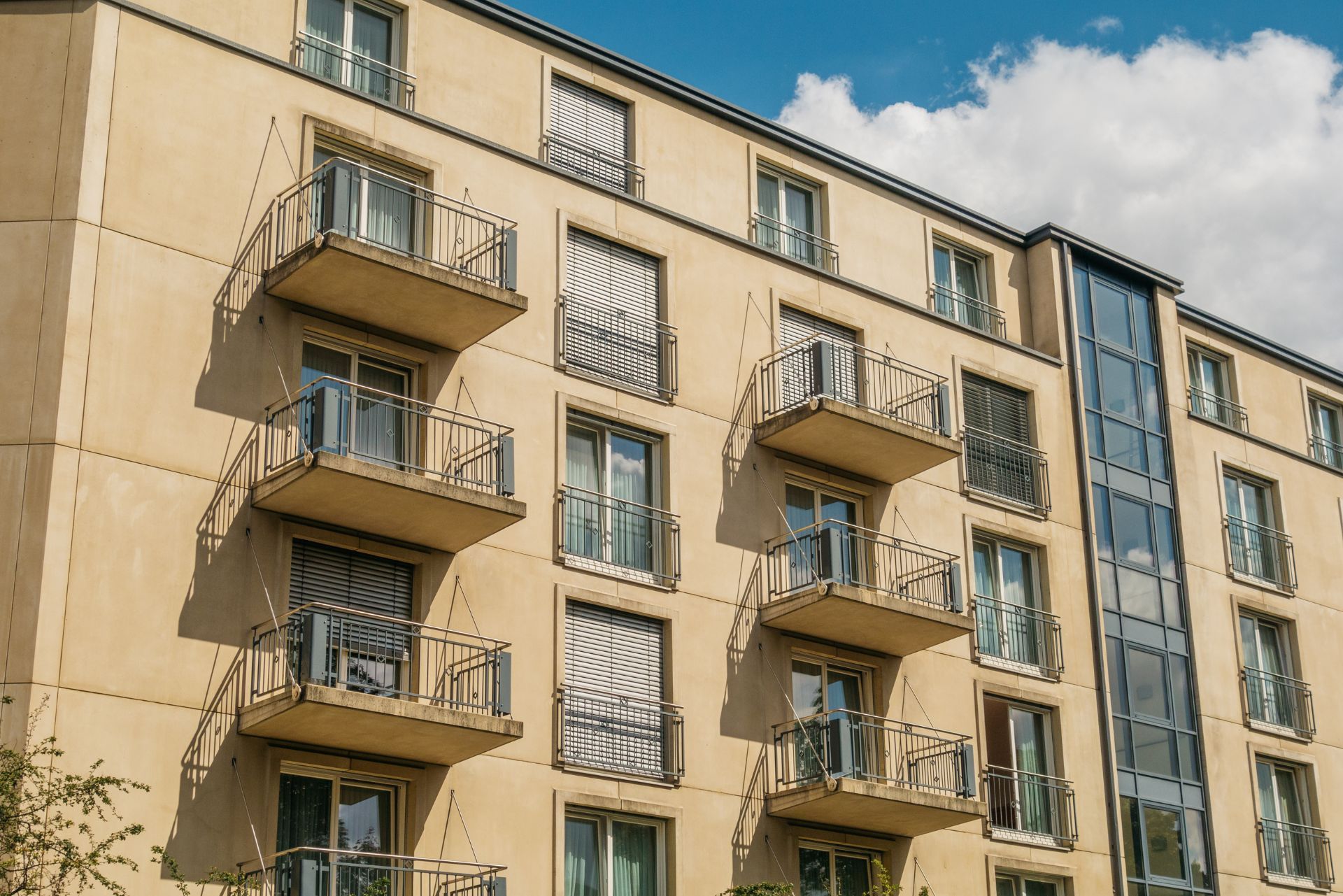Top 3 Recommended Policies

In recent years, Texas has witnessed significant shifts in the multifamily housing market, particularly affecting Class C apartment properties. These older, often more affordable apartment buildings face unique challenges, especially when it comes to insurance. Rising insurance premiums have become a critical concern for property owners and investors alike, impacting operational costs, property values, and even new construction projects.
Understanding the insurance landscape for Class C multifamily apartments in Texas is essential for landlords, property managers, and stakeholders aiming to navigate this evolving market successfully. This article delves into the factors driving insurance cost increases, the implications for the multifamily sector, and strategies to mitigate these challenges.
For a detailed look at how insurance costs are reshaping the market, Paul Fiorilla, Director of Research at Yardi Matrix, provides insightful analysis on the rapid rise in insurance premiums affecting multifamily properties nationwide.
The Rising Cost of Insurance for Class C Multifamily Properties
Insurance premiums for multifamily properties in Texas have surged dramatically over the past few years, outpacing other operating expenses. According to Paul Fiorilla, insurance costs are increasing three times faster than operating costs, a trend that has placed substantial financial pressure on property owners.
Specifically, the annual cost to insure an apartment has soared by 128% nationally since 2020, with Texas markets experiencing some of the steepest hikes. In Houston, for example, insurance premiums have risen up to $2,500 per unit per year, marking the highest increase seen in over three decades by industry veterans.
This escalation is not isolated to Houston. Cities like Dallas-Fort Worth, Austin, and San Antonio are also grappling with similar challenges, as reported by Institutional Property Advisors. The surge in insurance costs is reshaping the economics of Class C multifamily housing, often considered the backbone of affordable rental options in Texas.
Why Are Insurance Costs Increasing So Rapidly?
Several factors contribute to the dramatic rise in insurance premiums for Class C multifamily properties. Older buildings typically have outdated infrastructure and may not meet current building codes or safety standards, increasing their risk profile in the eyes of insurers. Additionally, Texas faces heightened exposure to natural disasters such as hurricanes, flooding, and severe storms, which elevate the likelihood of costly claims.
Moreover, the insurance market has tightened due to broader economic conditions, including higher reinsurance costs and increased claims nationwide. This combination of localized risk and national market dynamics has resulted in insurers adjusting premiums upward to maintain profitability.
In addition to these factors, the growing prevalence of climate change-related events has also played a significant role in driving up insurance costs. Insurers are increasingly factoring in the long-term risks associated with extreme weather patterns, leading to more conservative underwriting practices. This shift can be particularly burdensome for Class C properties, which often lack the financial flexibility to absorb such increases. As a result, property owners may find themselves facing difficult decisions about whether to pass these costs onto tenants or absorb the financial hit themselves.
Furthermore, the rising costs of materials and labor due to inflation have compounded the situation. When property owners need to make repairs or upgrades to meet insurance requirements or to mitigate risks, they often encounter skyrocketing prices for construction services. This not only affects their bottom line but can also lead to delays in necessary improvements, further exacerbating the risk profile of these properties. As the insurance landscape continues to evolve, multifamily property owners must navigate these challenges carefully to ensure their investments remain viable and competitive in an increasingly costly environment.

Impact on Multifamily Sales and Development in Texas
The surge in insurance premiums has had a tangible effect on multifamily property transactions and new construction in Texas. Houston’s multifamily sales, for instance, plummeted by 74% from 2022 to 2023, largely attributed to soaring insurance costs and the rising cost of capital. This decline signals a cautious approach from investors wary of unpredictable expenses and diminished returns. As a result, many potential buyers are now opting to wait for more favorable market conditions, which could lead to a prolonged stagnation in sales activity. This hesitance not only impacts individual transactions but also affects the overall health of the real estate market, creating a ripple effect that could hinder economic growth in the region.
New construction has also slowed considerably. Institutional Property Advisors reported that apartment construction starts across major Texas markets—including Dallas-Fort Worth, Houston, Austin, and San Antonio—dropped to just 6,500 units in the second quarter of 2023. This slowdown threatens to exacerbate the existing housing shortage, particularly in affordable Class C segments. With fewer new units coming online, the competition for existing properties intensifies, leading to higher rental prices and a potential increase in homelessness as lower-income families struggle to find suitable housing. Furthermore, developers are increasingly hesitant to initiate new projects without clarity on future costs, leading to a stagnation that could last well into the coming years.
The Austin Apartment Association’s recent State-of-the-Industry report highlights these trends, noting how rising insurance costs are influencing both construction activity and market forecasts in the region. The report also emphasizes the importance of policy adjustments to mitigate these challenges, suggesting that local governments may need to explore incentives for developers to encourage new construction despite the financial pressures.
Consequences for Property Owners and Tenants
For property owners, higher insurance premiums translate into increased operational costs that can erode profit margins. Many owners face tough decisions about whether to absorb these costs, pass them on to tenants, or defer maintenance and upgrades, which could further degrade property value. As property values decline, owners may find it increasingly difficult to secure financing for future projects or renovations, creating a cycle of stagnation that could affect entire neighborhoods. Additionally, the uncertainty surrounding insurance costs can complicate long-term financial planning, making it challenging for owners to invest in improvements that could enhance tenant satisfaction and retention.
Tenants in Class C multifamily apartments may experience rent increases as landlords seek to offset rising expenses. This dynamic poses challenges for affordable housing availability, as Class C properties often serve lower-income residents who are more sensitive to rent hikes. As rents rise, many families may be forced to make difficult choices, such as cutting back on essential expenses or relocating to less desirable areas. The potential displacement of long-term residents could lead to increased social instability, as communities that once thrived on diversity and economic variety begin to fracture under financial pressures. Furthermore, advocacy groups are increasingly calling for legislative action to protect tenants from steep rent increases, highlighting the urgent need for a balanced approach that addresses both the financial realities faced by property owners and the housing needs of vulnerable populations.
Strategies to Manage Insurance Costs for Class C Properties
Despite the challenging insurance environment, there are proactive steps property owners and managers can take to manage and potentially reduce insurance expenses.
1. Risk Mitigation and Property Upgrades
Improving property conditions and implementing risk mitigation measures can make a significant difference. Upgrading electrical systems, roofing, plumbing, and fire safety equipment not only reduces the likelihood of claims but also demonstrates to insurers a commitment to risk management.
Regular maintenance and inspections can prevent small issues from escalating into costly claims. Additionally, investing in disaster preparedness—such as flood barriers or storm-resistant windows—can help lower risk in Texas’s vulnerable regions. Implementing a comprehensive safety program that includes tenant education on emergency procedures can further enhance safety and reduce liability exposure, creating a more secure environment for both residents and property owners.
2. Shopping Around and Negotiating with Insurers
Given the volatility in the insurance market, it is crucial for owners to periodically review their insurance policies and seek competitive quotes. Working with brokers who specialize in multifamily insurance can uncover better coverage options or premium reductions.
Some insurers may offer discounts for bundling policies or for properties that meet certain safety certifications. Negotiating terms and coverage limits can also help align insurance costs with actual risk exposure. Additionally, maintaining a good claims history can be a powerful bargaining chip; insurers are often more willing to negotiate favorable terms for properties with fewer claims, which reflects responsible management practices and a commitment to risk reduction.
3. Exploring Alternative Insurance Solutions
In some cases, owners might explore captive insurance arrangements or risk retention groups, which allow pooling of risks among similar property owners. While more complex, these alternatives can provide more stable and potentially lower-cost coverage over time.
Additionally, staying informed about legislative changes and insurance market developments is essential. Industry associations, such as the Austin Apartment Association, often provide resources and advocacy efforts aimed at addressing insurance affordability. Engaging with these organizations can also open doors to networking opportunities, where property owners can share insights and strategies, fostering a community approach to managing insurance costs effectively. Furthermore, leveraging technology—such as risk assessment software—can help owners better understand their specific risks and tailor their insurance needs accordingly, ultimately leading to more informed decisions and potential savings.

The Future Outlook for Texas Class C Multifamily Insurance
While the current insurance climate presents challenges, there are signs of cautious optimism. Market adjustments and increased awareness of risk management may help stabilize premiums over time. However, the pace of change will depend on broader economic factors, regulatory responses, and the ongoing impact of climate-related risks.
For stakeholders in Texas’s Class C multifamily sector, staying informed and adaptable is key. Leveraging expert insights and industry reports can guide strategic decisions and help mitigate financial risks associated with insurance.
As one industry expert noted, “I can’t imagine there’s a multifamily operator out there who has not been impacted by the rising insurance costs,” underscoring the widespread nature of this challenge across the state’s multifamily housing market. This sentiment reflects the real-world impact on deals and budgets in Texas’s multifamily sector.
Key Takeaways
- Insurance costs for Class C multifamily apartments in Texas have surged dramatically, with premiums increasing over 100% since 2020.
- Higher insurance expenses are contributing to a decline in multifamily sales and new construction, particularly in major Texas cities.
- Property owners can manage costs by investing in risk mitigation, negotiating with insurers, and exploring alternative insurance options.
- Rising insurance costs have broader implications for affordable housing availability and tenant affordability in Class C properties.
- Staying informed through industry reports and expert insights is crucial for navigating the evolving insurance landscape.
For those involved in Texas’s multifamily housing market, especially Class C properties, understanding and addressing insurance challenges is more important than ever. By taking proactive steps and leveraging available resources, owners and managers can better protect their investments and contribute to a more resilient housing market.
Moreover, the ongoing evolution of technology in the insurance sector is also worth noting. Insurtech companies are emerging with innovative solutions that can streamline the underwriting process and enhance risk assessment capabilities. These advancements may lead to more tailored insurance products that better meet the unique needs of Class C multifamily properties, potentially alleviating some of the financial pressures currently faced by property owners. As these technologies mature, they could play a pivotal role in reshaping the insurance landscape, making it more responsive to the challenges posed by climate change and urban development.
Additionally, community engagement and advocacy are becoming increasingly important as stakeholders seek to influence policy changes that can benefit the multifamily sector. By collaborating with local governments and housing organizations, property owners can work towards creating a more favorable regulatory environment. This proactive approach not only helps in addressing immediate insurance concerns but also fosters a long-term vision for sustainable and affordable housing solutions in Texas, ensuring that Class C properties remain a viable option for tenants in need of affordable living spaces.
Contact Us


